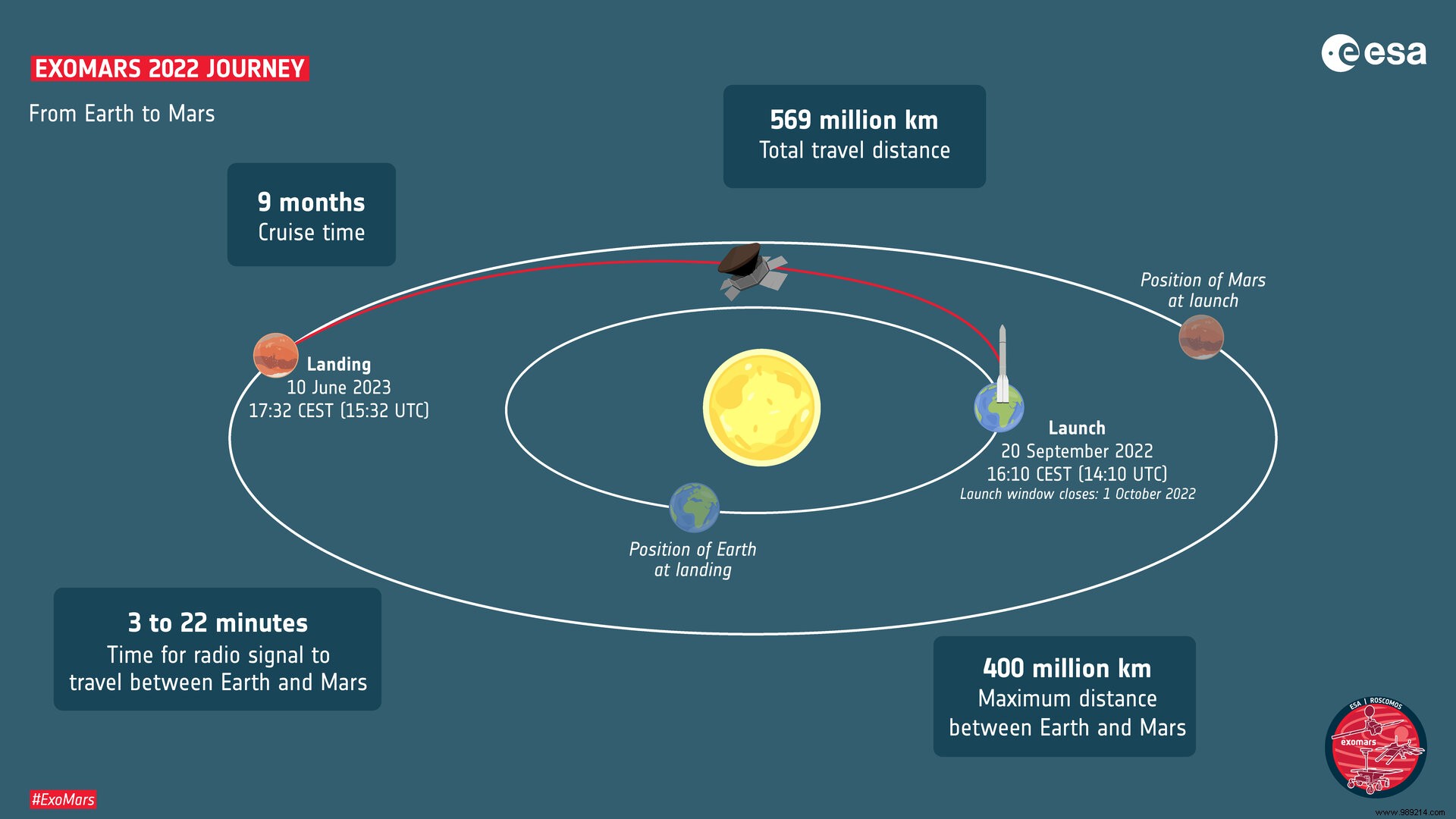After several months of trajectory calculations, ESA and Roscosmos have finally traced the path that will lead them to Mars. Takeoff is scheduled in two years for a landing scheduled for the summer of 2023.
Like NASA, the United Arab Emirates and China, the European Space Agency (ESA) and the Russian agency Roscosmos were to take advantage of a launch window this year to start a joint mission to the red planet, dubbed ExoMars 2020 . Its objective was to be the same as that of the American mission, namely to seek traces of past life.
Unfortunately, technical problems inherent in the deployment of the parachutes allowing the landing of the Rosalind Franklin rover on Mars ultimately led the two agencies to make a difficult decision:postpone the mission .
“Taking due consideration of the recommendations provided by the European and Russian Inspectors General, ExoMars experts have concluded that the tests necessary for all components of the spacecraft are suitable for adventure on Mars require more time" , had then justified the ESA last March.
Obviously, the pandemic hasn't helped. As the heads of ESA and Roscosmos had also pointed out, the need to maximize the robustness of all ExoMars systems necessarily involved the travel of experts to several partners, the majority of which are in France or Germany. . However, these two countries suffered their first big wave of Covid-19 at the time .
That said, we knew that the next launch window for Mars would not open until 2022. However, since the postponement of this highly anticipated mission, no announcement has been made. had been made on the calendar side. And for good reason, engineers from ESA and the Roscomos agency had to rework several new trajectories.
Finally, after several months of calculations, the path that ExoMars 2022 will follow to reach the red planet has now been drawn. The mission should take off on September 20, 2022 to land June 10, 2023 around 5:30 p.m. French time (that’s precise!) on Oxia Planum. This basin is located in the northern hemisphere of the red planet, near the equator. According to the analyses, it would indeed seem that there is a lot of clay on site, emanating from several channels. This suggests a humid past .
Note that an alternative trajectory to arrive a week earlier has also been considered, according to the ESA. However, this involved a bad connection with the ship during the first days of the mission. "That choice was too risky “, justifies Tiago Loureiro, ExoMars operations manager.

Once there, the general idea will be to install a fixed scientific platform, built by the Russians. Several instruments will then make it possible to probe the Martian environment. It will also be a question of studying the distribution of water below the surface .
Meanwhile, ESA's Rosita Franklin rover will roam around the landing site with the aim of collecting material samples up to two meters deep. depth . If life ever existed, it could indeed have taken refuge under the surface to protect itself from cosmic rays. These samples will then be brought back to the platform which will analyze them.
Generally, the mission should last around five years . At its end, we could then know if life ever existed on Mars.